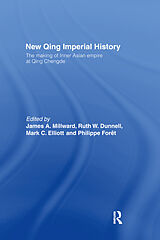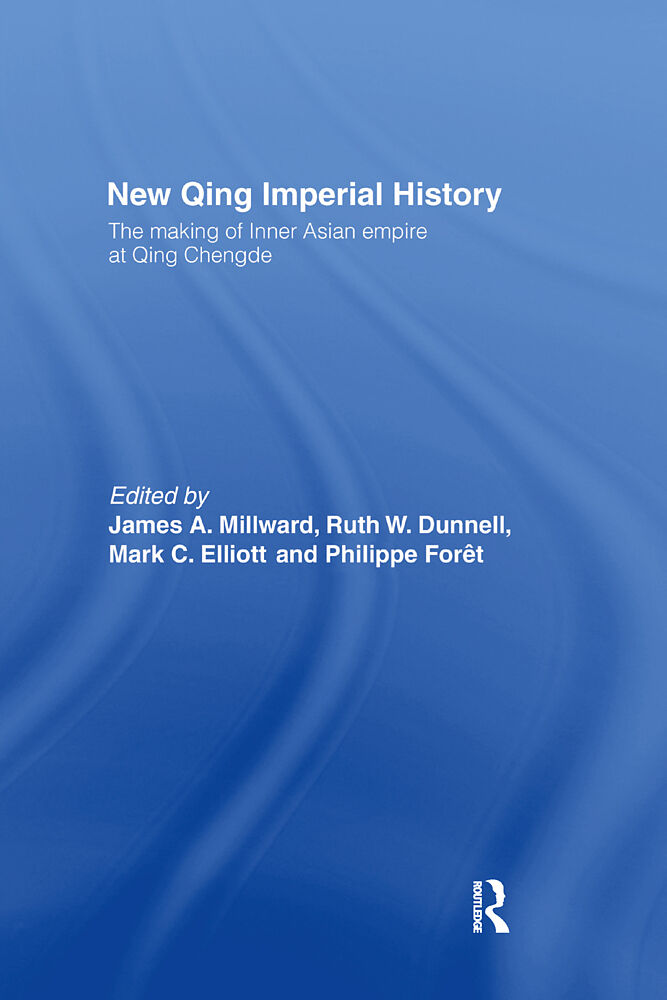New Qing Imperial History
Einband:
Kartonierter Einband
EAN:
9780415511186
Untertitel:
The Making of Inner Asian Empire at Qing Chengde
Autor:
Ruth W. Dunnell, Mark C. Elliott, Philippe Foret, James A Millward
Herausgeber:
Routledge
Anzahl Seiten:
266
Erscheinungsdatum:
2011
ISBN:
978-0-415-51118-6
Well-known authors use the Manchu summer capital of Chengde and associated architecture, art and ritual activity as the focus for an exploration of the importance of Inner Asia and Tibet to the Qing Empire (1636-1911).
New Qing Imperial History uses the Manchu summer capital of Chengde and associated architecture, art and ritual activity as the focus for an exploration of the importance of Inner Asia and Tibet to the Qing Empire (1636-1911). Well-known contributors argue that the Qing was not simply another Chinese dynasty, but was deeply engaged in Inner Asia not only militarily, but culturally, politically and ideologically.
Emphasizing the diverse range of peoples in the Qing empire, this book analyzes the importance to Chinese history of Manchu relations with Tibetan prelates, Mongolian chieftains, and the Turkic elites of Xinjiang. In offering a new appreciation of a culturally and politically complex period, the authors discuss the nature and representation of emperorship, especially under Qianlong (r. 1736-1795), and examine the role of ritual in relations with Inner Asia, including the vaunted (but overrated) tribute system.
By using a specific artifact or text as a starting point for analysis in each chapter, the contributors not only include material previously unavailable in English but allow the reader an intimate knowledge of life at Chengde and its significance to the Qing period as a whole.
Autorentext
James A. Millward is Associate Professor of History at Georgetown University, USA.
Ruth W. Dunnell is James Storer Associate Professor of History at Kenyon College, Ohio, USA.
Mark C. Elliott is Professor of Chinese and Inner Asian History, Harvard University, USA.
Philippe Forêt is a Research Fellow of the Swiss National Science Foundation, and an Associate Researcher at both the Institute of Cartography of the Swiss Federal Institute of Technology at Zurich, and the Space and Culture Laboratory of Paris IV Sorbonne University, France.
Klappentext
New Qing Imperial History uses the Manchu summer capital of Chengde and associated architecture, art and ritual activity as the focus for an exploration of the importance of Inner Asia and Tibet to the Qing Empire (1636-1911). Well-known contributors argue that the Qing was not simply another Chinese dynasty, but was deeply engaged in Inner Asia not only militarily, but culturally, politically and ideologically. Emphasizing the diverse range of peoples in the Qing empire, this book analyzes the importance to Chinese history of Manchu relations with Tibetan prelates, Mongolian chieftains, and the Turkic elites of Xinjiang. In offering a new appreciation of a culturally and politically complex period, the authors discuss the nature and representation of emperorship, especially under Qianlong (r. 1736-1795), and examine the role of ritual in relations with Inner Asia, including the vaunted (but overrated) tribute system. By using a specific artifact or text as a starting point for analysis in each chapter, the contributors not only include material previously unavailable in English but allow the reader an intimate knowledge of life at Chengde and its significance to the Qing period as a whole.
Inhalt
Part 1: Chengde as Inner Asian Capital Part 2: Rituals of Empire Part 3: The Emperor's Many Faces Part 4: Voices from Chengde

Leider konnten wir für diesen Artikel keine Preise ermitteln ...
billigbuch.ch sucht jetzt für Sie die besten Angebote ...
Die aktuellen Verkaufspreise von 6 Onlineshops werden in Realtime abgefragt.
Sie können das gewünschte Produkt anschliessend direkt beim Anbieter Ihrer Wahl bestellen.
Loading...
Die aktuellen Verkaufspreise von 6 Onlineshops werden in Realtime abgefragt.
Sie können das gewünschte Produkt anschliessend direkt beim Anbieter Ihrer Wahl bestellen.
| # | Onlineshop | Preis CHF | Versand CHF | Total CHF | ||
|---|---|---|---|---|---|---|
| 1 | Seller | 0.00 | 0.00 | 0.00 |
